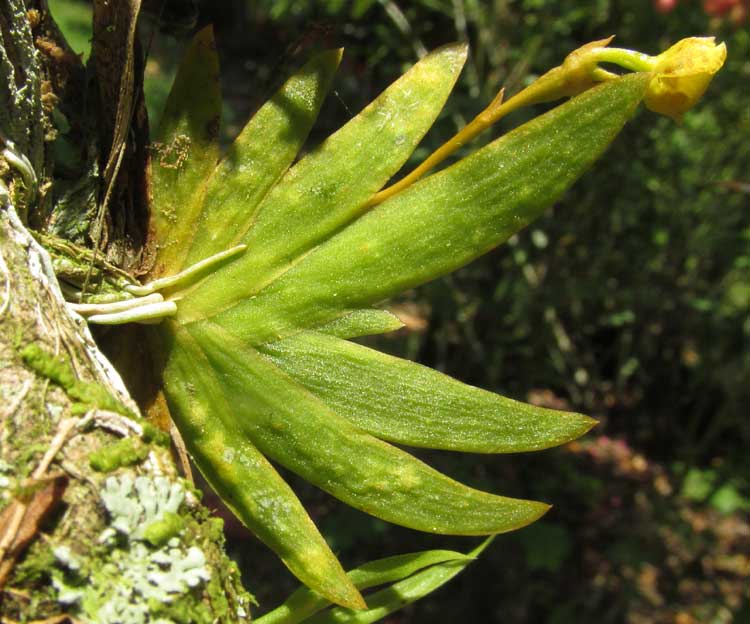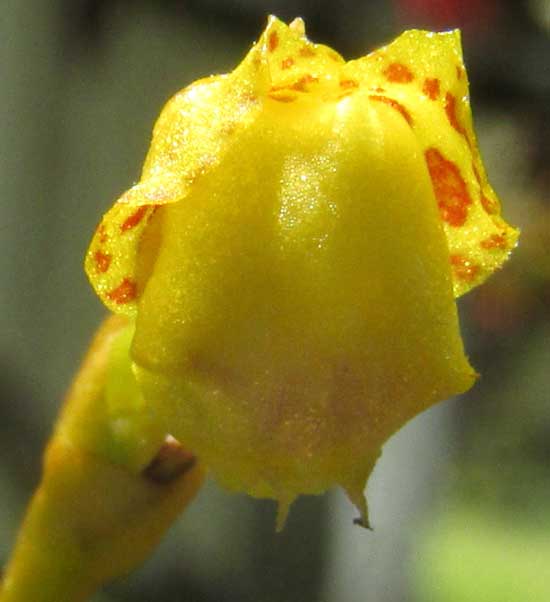Excerpts from Jim Conrad's
Naturalist Newsletter
from the May 29, 2016 Newsletter with notes from a visit to Lacanja Chansayab in the Lacandon Reserve; elevation 200m (650ft), N16.604°, W90.917°; Chiapas, MÉXICO
TINY PSYGMORCHIS ORCHID
In mid April when I was in the Lacandon community of Lacanja Chansayab in Chiapas's Lacandon Reserve in extreme southeastern Mexico, beside the informal little family campground where I pitched my tent, a Lacandon lady maintained a shady little spot where she hung orchids among tree limbs and planted colorful ornamentals. The orchids seemed to be species found in the surrounding woods. She must have sprayed the area regularly with a water hose because most of the orchids were flowering, despite it being the heart of the dry season. One tiny orchid species appeared on most of the trees, often in places a person wouldn't normally place them, so they gave the impression of prolifically reproducing on their own. Below, you can see one of the little, yellow-flowering orchids -- the leaves only about two inches long (5cm):

Notice how the leaves are narrowly scooped shaped, and that their bases nest into one another so that the leaves are held in one plane. An immature flower is shown below:

When I photographed that I didn't realize it was only partially opened, partly because all other flowers I noticed were in the same condition, and partly because of the old story that I'm unable to see what these things look like until they're on my computer screen. More mature blossoms, I found later, open into a complex shape reminding me of my childhood stereotype of a Dutch milkmaid's general form. At least the above picture shows rusty-red speckles, which are important for determining which of two similar species found in the area this is.
Our little orchid is PSYGMORCHIS PUSILLA, in English sometimes known as The Tiny Psygmorchis. The literature describes it as occurring in southern Central America and northern South America, though I do find it mentioned as present in coffee plantations in southern Mexico, and here in the Lacandon community of Lacanja Chansayab in Chiapas. Maybe the species isn't native in the forest here, but invades and thrives in human-made plantation situations, as a kind of "weed."